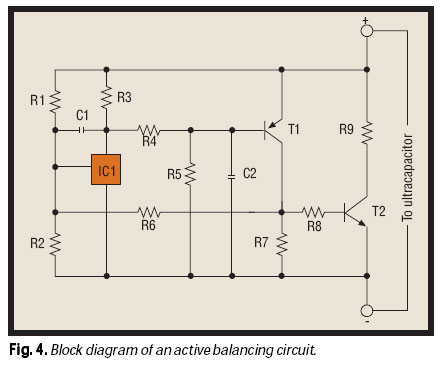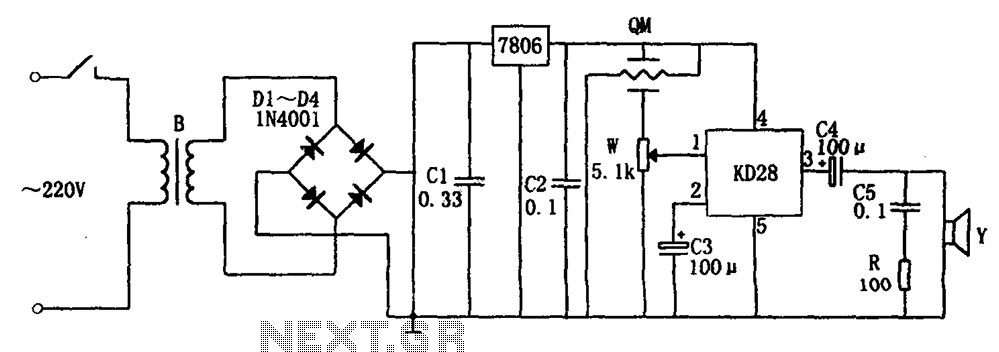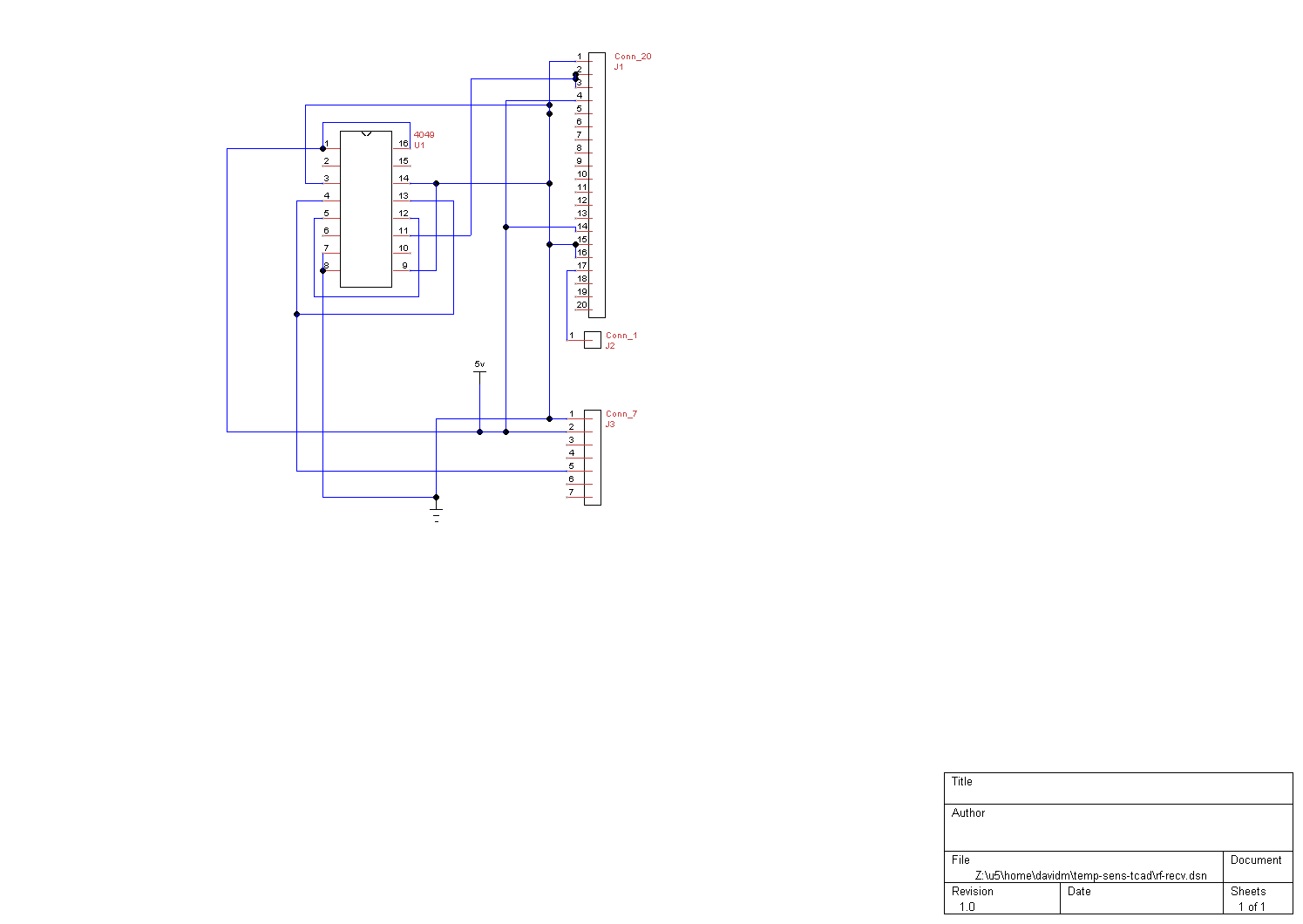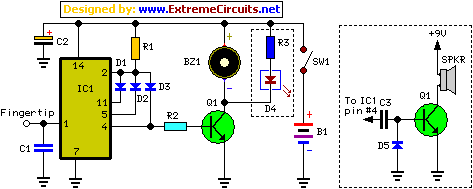
Preamp using the current series feedback circuit
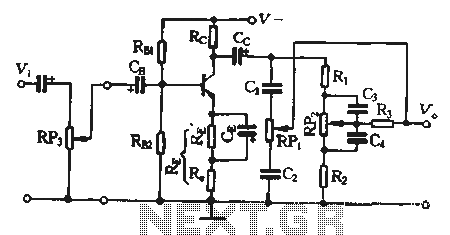
Pre-amplifiers utilize a tandem-type current feedback circuit, with an output impedance that is approximately equal to the DC collector resistance (Rc). The input impedance of the RC attenuator is equivalent to the load impedance of the amplifier. In the absence of resistor R3 in the tone control circuit, elevating the treble results in an equivalent load impedance for the amplifier, which can be illustrated in Figure 1-67.
Pre-amplifiers designed with a tandem-type current feedback circuit offer several advantages, including a low output impedance that is closely tied to the DC collector resistance (Rc). This design choice enables better signal integrity and reduces the influence of load variations on performance. The output stage is critical for driving subsequent stages in the audio signal chain, ensuring that the pre-amplifier can interface effectively with various loads, including passive components and active circuitry.
The RC attenuator serves a dual purpose in this configuration. It not only defines the input impedance of the network but also acts as a load for the amplifier. This relationship is crucial for maintaining signal fidelity and achieving the desired tonal characteristics. When the tone control circuit is configured without resistor R3, adjustments to the treble frequencies significantly alter the load impedance seen by the amplifier. This change can be represented graphically, as shown in Figure 1-67, which illustrates how the equivalent load impedance varies with treble adjustments.
In practical applications, careful consideration of component values, particularly the RC network, is essential for optimizing performance. The choice of resistor and capacitor values will dictate the frequency response and overall behavior of the pre-amplifier, ensuring that it meets the specific requirements of the audio system it is integrated into. Properly designed, this circuit can enhance audio quality by providing a clean and accurate amplification of the input signal, while also allowing for user-adjustable tonal shaping through the tone control features.Pre-amplifiers using current feedback circuit tandem type, its output impedance is approximately DC collector resistance Rc ,, surface RC attenuator input impedance of the network is the load impedance of the amplifier. If the tone control circuit without R3, then, when you lift the treble, the equivalent load impedance of the amplifier can be drawn in the form of Figure 1-67.
Pre-amplifiers designed with a tandem-type current feedback circuit offer several advantages, including a low output impedance that is closely tied to the DC collector resistance (Rc). This design choice enables better signal integrity and reduces the influence of load variations on performance. The output stage is critical for driving subsequent stages in the audio signal chain, ensuring that the pre-amplifier can interface effectively with various loads, including passive components and active circuitry.
The RC attenuator serves a dual purpose in this configuration. It not only defines the input impedance of the network but also acts as a load for the amplifier. This relationship is crucial for maintaining signal fidelity and achieving the desired tonal characteristics. When the tone control circuit is configured without resistor R3, adjustments to the treble frequencies significantly alter the load impedance seen by the amplifier. This change can be represented graphically, as shown in Figure 1-67, which illustrates how the equivalent load impedance varies with treble adjustments.
In practical applications, careful consideration of component values, particularly the RC network, is essential for optimizing performance. The choice of resistor and capacitor values will dictate the frequency response and overall behavior of the pre-amplifier, ensuring that it meets the specific requirements of the audio system it is integrated into. Properly designed, this circuit can enhance audio quality by providing a clean and accurate amplification of the input signal, while also allowing for user-adjustable tonal shaping through the tone control features.Pre-amplifiers using current feedback circuit tandem type, its output impedance is approximately DC collector resistance Rc ,, surface RC attenuator input impedance of the network is the load impedance of the amplifier. If the tone control circuit without R3, then, when you lift the treble, the equivalent load impedance of the amplifier can be drawn in the form of Figure 1-67.
